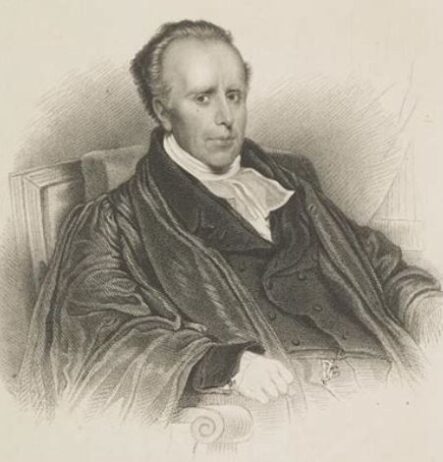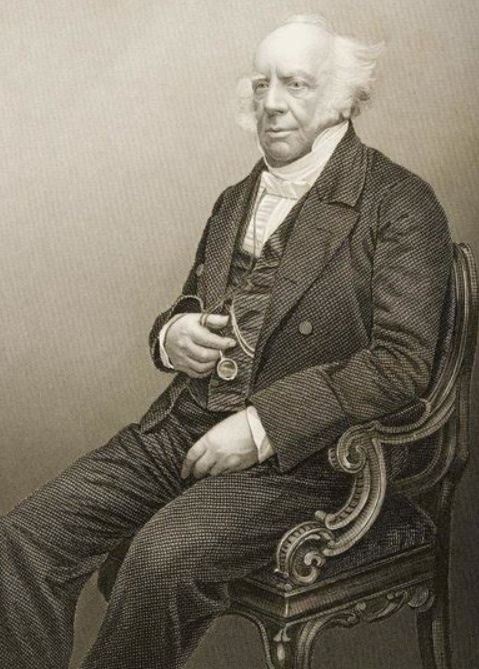1839 East London Revival


Introduction
Rev. Andrew Reed (1787-1862), the pastor of Wycliffe Chapel Congregational Church in East London, UK, had read revival accounts from the First Great Awakening which occurred in New England from the 1730s till the late 1740s. Those accounts left Reed disappointed with Jonathan Edwards and other leaders of that era who didn’t document specifics about what those pastors did to stimulate and keep the revival fires burning.
After the revival occurred at the church Reed was pastoring, he took the time to list the specific steps he took to lead his congregation back to a revived condition. He then sent that documentation in a form of a book to other Congregational ministers.
Why Churches Don’t Pursue Revival
Reed mentioned that there were two reasons why more ministers didn’t pursue revival, and they were:
► “Revivals on one hand, ran into fearful extravagance, and the prudent were disgusted.”
► Revivals “were contemplated as spectacles to inspire wonder and admiration, rather than as examples to be imitated.”
Reed also mentioned one other reason, and it stemmed from the staunch Calvinism of the day. He said that most ministers
placed everything so intently on the sovereignty of God that they believed they must patiently wait for revival, and that they were never to expect, seek, nor use any means to bring them to pass.
Reed then laid out the “means” or the steps he took that brought the revival to his congregation and community.

Andrew Reed
Extraordinary Prayer
On the first Sunday in October 1838, Reed met with the deacons for prayer and challenged the ten of them to break into groups of two and to pray. These 5 small groups prayed for three hours, and none of them felt as if it was too long of a time.
Sermon and Challenges for More Prayer
The next Sunday morning Reed preached on the Secret Prayer. The atmosphere during that service was said to have been very different.
That afternoon, following the communion service, the congregation was challenged to set aside one hour, one day per week, to pray for personal revival. Reed also challenged them to pray for the conversion of the lost.
Ten Revival Sermons
Another revival strategy Reed used was the preaching of 10 sermons that would be given till the end of 1838. These sermons captured the attention of the congregation, and it inspired them in their commitments to prayer.
Meeting with Specific Groups
To inspire and motivate people more effectively, Reed took the time to meet individuals in small groups within the congregation, with three of the groups being:
► The Christian Instruction Society
► The Teachers of the Sunday School
► The intercessors of the congregation.
The purpose of meeting individually with these smaller groups was specifically for prayer and exhortation. Reed’s hope was to impress upon these influential groups that revival could indeed happen, and that these groups had the influence through their connections to instill that hope within others.
Special Services Were Scheduled
Beginning with New Year’s Eve, Reed set the following schedule in place for special services that would have the intention of reviving the believers and seeing the lost saved:
► Monday, Dec. 31 — Service at 7 p.m. with prayer meeting to follow.
► Tuesday, Jan. 1 — Fasting and prayer at 9 a.m. and 3 p.m., and a service at 7 p.m.
► Wednesday Jan. 2 — Service at 7 p.m.
► Thursday Jan. 3 — Service at 7 p.m.
► Friday, Jan. 4 — Service at 3 p.m. and 7 p.m.
► Sunday Jan. 6 — Regular service time.
Home Visitations
The 10 deacons were asked to make visits to congregational members, and they were given specific instructions about their visits:
► They were to only discuss spiritual topics (no worldly conversations).
► They were to pray and exhort people to consider their spiritual condition.
► They were to pray for the salvation of any member of the household.
► They were directed to decline any offer of refreshments.
Results of the Scheduled Revival Services
► Following the Monday, Dec. 31, service, “nearly all chose to stay for the prayer meeting.”
► On the day set for fasting, Tuesday, Jan. 1, the 9 a.m. and 3 p.m. prayer meetings were kept brief, and following the evening service, the pastor dismissed the people and went to his office. The congregation, however, remained seated, and asked the deacons to request the pastor to return and hold a prayer meeting—which he did. This led to “many a revived Christian.”
► The Wednesday service on Jan. 2 left many experiencing “trembling and tears,” and after the pastor dismissed the congregation and left for his office, the congregation once again asked for him to return and conduct another prayer meeting.
► Prior to the service on Thursday, Jan. 3, many of the “fathers in the congregation held a prayer meeting,” because the sermon that night was to focus on the young people. The result of the service was that many of the young people were “awakened,” and the spiritual atmosphere of the congregation kept growing. Following the service, the young people were invited to a room where the pastor prayed and exhorted them. “Many were in tears, all of them kneeling on the floor.” There were at least 200 that assembled in that room at that time and they all gave their hearts to God.
► On Friday, Jan. 4, the building was full and the galleries had to be opened to accommodate the crowd that had gathered.
► On Sunday, Jan. 6, the church was again packed and the sermon was so powerful that when Reed gave the invitation to consider Christ, “there was great seriousness, and many, overcome, bowed down their heads, and wept.”
► Sunday evening, Jan. 6, the building was again full, and during the sermon “silence and solemnity prevailed.” When a hymn was given to sing, the people could not sing, as they were evidently too overcome by the presence of God. The unconverted were invited to stay that night for an additional hour, to pray, and submit themselves to God.
During this week there were continual services and special meetings with the church being full. The minister would regularly hold meetings to give direction to those seeking to be saved, as well as prayer meetings being held.
► On Tuesday, January 8, Reed held a meeting in a room at the church for those who were wanting to talk to the pastor about their salvation, and a “great many came.” Reed was meeting with the people individually, and he continued this work from 6 p.m. till after 10 p.m. With the services continuing to produce fruit, they continued with no pause.
The Revival Continued
The weeks continued with the same type of schedule till the end of March, with 4-5 evenings per week being filled with services. Other times of the days were spent ministering to new converts, and those meetings would often continue till 10 p.m.
Good Friday—March 29, 1839
This day was considered a holiday, reserved specifically for prayer and church services. Reed met with his deacons at 3 p.m. for prayer and business. The congregation met at 7 p.m. with nearly 1,000 people being present.
The following Friday, 71 people became members of the church, with another 20 preparing to do so.
This revival continued through June, when Reed’s health, and that of one of the deacons, began to suffer, requiring them to take 10 days off to recuperate.
Number of Converts and New Church Members
► During this revival more than 300 were converted and another 200 became members of the church.
► Another 100 were believed to have been converted but had not as yet solidified their faith in the formal manner.
Results of the Revival
► The congregation’s biblical knowledge and the ministry they conducted increased.
► The numbers in attendance greatly increased. During Andrew Reed’s ministry attendance grew to 2,000 (for 1839, that was an extremely large church).
► The congregation was extremely attentive to the sermons.
► There was a group of older children in the church’s day-school that began meeting every morning from 8-9 for reading of the Bible and prayer.
► Concern for others was greatly increased.
► Some of the young men at a nearby college launched an early morning prayer meeting, specifically praying for a revival among the students in that school.
► The converts at Wycliffe Chapel included those from under 14, and up to 70 years of age.
► Many spiritually dead and apathetic Christians came alive.
► There were many first-time converts who professed Christ after hearing the Gospel for the first time.
► The largest numbers who turned to Christ came from the younger generation.
► There were around 14 ministries in operation, including:
…..• Numerous schools and educational efforts to those of all ages
…..• A library
…..• Prison ministry
…..• Ministry for young mothers
…..• Ministry for young men
…..• Ministry for the poor
Means to Stimulate Revival
Here are the main methods Andrew Reed used to stimulate and ignite the fires of revival:
► Prayer was said to have been “the means to an end.” There was a lot of prayer, even before the first steps for revival were taken in any other area.
► The preaching of the truth. Reed refused to “flatter the sinner” and did all he could to bring them “to a state of deep and willing humiliation.” The sermons were well planned to awaken the consciousness of saints and sinners for their need for revival and conversion.
► Home visitation was heavily relied upon to make personal connections with people.
► Congregational members opened their homes for fellowship of the unsaved, so as to develop relationships.
► The congregation was heavily involved in praying for and then inviting friends and neighbors to church. When guests came to the church, the regular attenders willing gave up their seats for them. The congregational members also went to great lengths to ensure guests had a private conversation with the pastor after the service.
► Groups of young men distributed 30,000 tracts during the Fairlop Fair, which was one of London’s largest attractions, drawing up to 100,000 people.
► When people were converted, their change of behavior was noticed by others, causing even more to turn to Christ.
Andrew Reed Leaves for Rest
By May and June, the workload was so intense that it was strongly urged upon Reed to leave for rest, yet he continued till sometime after August.
Even though he knew he must rest for a season, he found it very hard to depart, as the revival was still ongoing. A few months after his departure he wrote:
Never did I know such regret in leaving my charge for a season.
Even at his last service before he departed on his Sabbatical, he had over 200 people who stayed after an evening service, wanting to receive counsel about salvation.

Rev. Dr. Andrew Reed
Beyond the revival at Wycliffe Chapel, Andrew Reed was highly known for being instrumental in the formation of many institutions:
► The London Orphan Asylum, at Lower Clapton
► The Infant Orphan Asylum, Wanstead
► The Asylum for Fatherless Children, Reedham, near Croydon
► The Asylum for Idiots, at Earlswood
► The Royal Hospital for Incurables
► The Eastern Counties Asylum for Idiots, at Colchester
► The East London Sunday School
Source
► A Narrative of The State of Religion at Wycliffe Chapel, London by Andrew Reed
► Andrew Reed by Wikipedia
► Obituary of Rev. Dr. Andrew Reed by The Sydney Morning Herald
► Reedham Orphanage by Wikipedia
► Ten Facts About the Rev. Andrew Reed by rhn.org.uk
► Wycliffe Chapel by Wikipedia
Return to List of Revival Stories
Chet & Phyllis Swearingen
(260) 920-8248
romans1015@outlook.com
Beautiful Feet
P.O. Box 915
Auburn, IN 46706

